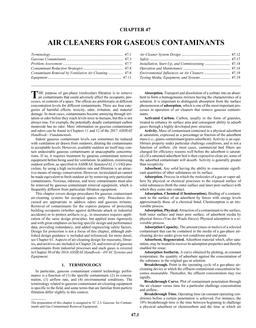In the past several years measurements of radon and its daughters made in residential buildings in the U. S. indicate that in some situations the potential health hazard to the occupants of buildings from inhalation exposure can be significant. Measurement results from different geographical areas of the U. S. indicate that indoor radon and radon daughter concentrations can vary by as much as a factor of 100. In order to address this problem we will present methods and techniques necessary to determine the range and distribution of the annual average concentration of radon and daughters from which the annual mean radiation dose can be calculated. For diagnostic purposes and for the calculations necessary to determine the radiation dose to the lungs, we will describe additional measuring techniques for the sources of radon, air exchange rate, particle size of radon daughters and respiratory deposition.
Units: Dual
Citation: Symposium, ASHRAE Transactions, 1985, vol. 91, pt. 2B, Honolulu, HI
Product Details
- Published:
- 1985
- Number of Pages:
- 9
- File Size:
- 1 file , 1 MB
- Product Code(s):
- D-HI-85-39-1


